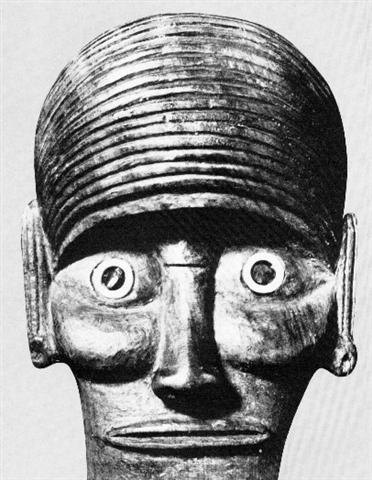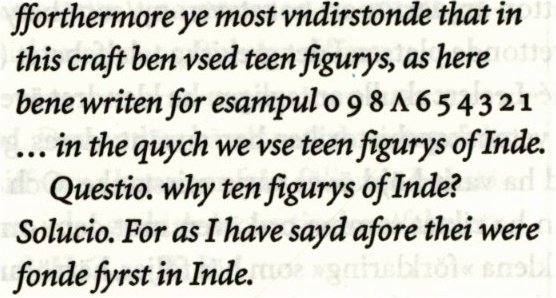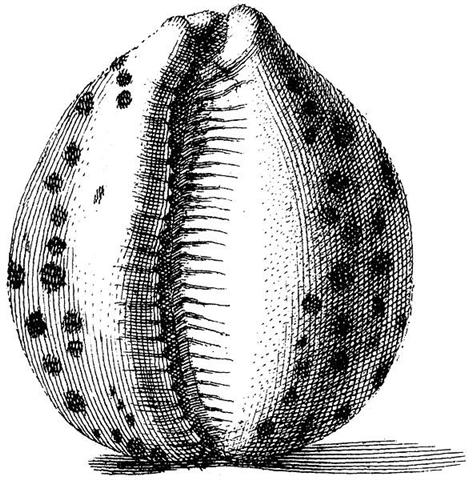These are the glyphs with 'orifices' in the B text:
Assuming the basic vaha kai type of glyph illustrates the opening of the left ear, then the first pair above might in contrast illustrate mouth openings:
Although upside down. The ao (air) face above could represent high summer, and then one might think the upside down mouth would represent the opposite, i.e. the season of midwinter. However, the compressed ('close embrace') situation in midwinter ought to generate a mouth shut firm as in the ua (rain) face:
... They were Ranginui, the Sky Father, and Papatuanuku, the Earth Mother, both sealed together in a close embrace. Crushed between the weight of their bodies were their many children, whose oppression deepened. They yearned to be free; they fought their parents and each other to break loose. Tuumatauenga, virile god of war, thrust and shouted; Tangaroa of the oceans whirled and surged; Tawhirirangimaatea, Haumiatiketike and Rongomatane, of wild foods and cultivated crops, tried their best but were not successful; and Ruamoko, god of earthquakes, yet to be born, struggled in the confinement of his mother's womb ... Of them all, Taane Mahuta, the god of the forests, was the most determined; he set his sturdy feet upon his father's chest, and braced his upper back and shoulders against the bosom of his mother. He pushed; and they parted. So the world, as the Maori understand it, came into being ... ... There is a curious tradition concerning these grizzled, otherworldly statues, solemn and powerful, with their blank, aloof eye-sockets gazing out over the limitless ocean. Like most of the other Moai of Easter Island the local belief is that they died, long ago, at the time when mana - magic - supposedly fled from the island never to return. However, in common with only a very few of the other Moai, it is believed that these particular statues still have the power, twice a year, to transform themselves into aringa ora - literally 'living faces' - a concept startingly similar to the ancient Egyptian notion that statues became 'living images' (sheshep ankh) after undergoing the ceremony of the 'opening of the mouth and the eyes'. Statues at Angkor were likewise considered to be lifeless until their eyes had been symbolically 'opened' ... Therefore the pair Ba5-37--38 could illustrate the 'inversion of sexes' at high summer.
... When this tremendous task had been accomplished Atea took a third husband, Fa'a-hotu, Make Fruitful. Then occurred a curious event. Whether Atea had wearied of bringing forth offspring we are not told, but certain it is that Atea and her husband Fa'a-hotu exchanged sexes. Then the [male] eyes of Atea glanced down at those of his wife Hotu and they begat Ru. It was this Ru who explored the whole earth and divided it into north, south, east, and west ...
According to Metoro we should understand Ba5-37--38 as pictures of the 'prayer house' (te hare pure).
Hare. House, family, home. Vanaga. House, cabin, habitation, building, hut, structure; hare iti, hut; hare itiiti no, cabin; hare kahu, tent; hare neinei, latrine; hare no iti, cell; hare nunui, palace; hare pohurihuri, prison; hare pure, chapel, church; ki te hare, at home. Harepepe, kelp. Harepiko, a. asylum, place of refuge; b. ambush, snare. Harepopo, shed. Harepopokai, storehouse. Churchill. Ba5-38 was said by Metoro to indicate that te pure had arrived (kua tomo) home (ki te hare) and a dot indicates this important place. Listening in the orifice of a sea-shell you can hear the sea whisper its prayers. A change of order (chain of command) evidently occurred between te hare pure and te pure ki te hare. Pure. Cowrie (Cypraea caput draconis); pure vaka, another type of cowrie, which can float on the sea like a diminutive boat (vaka). Vanaga. 1. To pray, to supplicate, invocation, prayer; hare pure, church, chapel; tae pure, irreverence; purega, prayer P Pau., Mgv., Mq., Ta.: pure, to pray. In Samoa, Tonga, Niuē, Futuna, Uvea, pule means to command. 2. A shell T. P Pau.: hakapurepure, to dye, to color. Mq.: pué, the porcelain shell. Ta.: pure, a mark. Purepure, spotted, dappled; ragi purepure, dappled sky. Purepurea, spotted. P Pau.: hakapurepure, to dye, to color. Mgv.: purepure, printed cloth; akapurepure, to paint in different colors. Mq.: puépué, covered with pale scars. Ta.: purepure, spotted, dappled. Churchill. Pureva, rock, stone (small enough to be thrown by hand). Vanaga. Pureva, to throw a stone. Ta.: Pureva, to be on the eve of going. Ha.: puleva, to float here and there. Churchill. Pau.: Pure-hiva, a butterfly. Mgv.: pure-rehue, id. Ta.: pure-hua, a moth. Mq.: pure-hua, id. Ma.: pure-hua, id. Churchill.
... Ogotemmêli had his own ideas about calculation. The Dogon in fact did use the decimal system, because from the beginning they had counted on their fingers, but the basis of their reckoning had been the number eight and this number recurred in what they called in French la centaine, which for them meant eighty. Eighty was the limit of reckoning, after which a new series began. Nowadays there could be ten such series, so that the European 1,000 corresponded to the Dogon 800. But Ogotemmêli believed that in the beginning men counted by eights - the number of cowries on each hand, that they had used their ten fingers to arrive at eighty, but that the number eight appeared again in order to produce 640 (8 x 10 x 8). 'Six hundred and forty', he said, 'is the end of the reckoning.' According to him, 640 covenant-stones had been thrown up by the seventh Nummo to make the outline in the grave of Lébé ... Possibly there was a kind of tent mark (pure) - a ziggurath - here, at the dry opposite side of the year compared to the waterfilled Square of Pegasus:
The Long Sand-bank (Chang-sha) was a name for ζ Corvi (*186, September 23, 266).
... After the great flood had at long last receded, Raven had gorged himself on the delicacies left by the receding water, so for once, perhaps the first time in his life, he wasn't hungry. But his other appetites, his curiosity and the unquenchable itch to meddle and provoke things, to play tricks on the world and its creatures, these remained unsatisfied. Raven gazed up and down the beach. It was pretty, but lifeless. There was no one about to upset, or play tricks upon. Raven sighed. He crossed his wings behind him and strutted up and down the sand, his shiny head cocked, his sharp eyes and ears alert for any unusual sight or sound. The mountains and the sea, the sky now ablaze with the sun by day and the moon and stars he had placed there, it was all pretty, but lifeless. Finally Raven cried out to the empty sky with a loud exasperated cry. And before the echoes of his cry faded from the shore, he heard a muffled squeak. He looked up and down the beach for its source and saw nothing. He strutted back and and forth, once, twice, three times and still saw nothing. Then he spied a flash of white in the sand. There, half buried in the sand was a giant clamshell. As his shadow fell upon it, he heard another muffled squeak. Peering down into the opening between the halves of the shell, he saw it was full of tiny creatures, cowering in fear at his shadow ... Presumably 294 and 284 might represent right ascension day *294 respectively *284 (December 30), which then would imply:
|
|||||||||||||||||||||||||||||||||||||||||||||||||||||||||||||||||||||||||||||||||||||||||||||||||||||||||||||||||||||||||||||||||||||||||||||||||||||



















